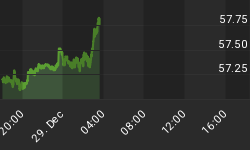Stock market movements since the start of the credit crisis have been characterised by relatively high volatility as uncertainty became paramount. And as new pieces of the economic recovery puzzle are added every day, investors are increasingly struggling to make sense of the most likely direction of stock prices.
It seems to be a case of so many pundits, so many views. Has the market started topping out and is a primary bear market about to resume, or will the secular bull market merely be correcting the strong rally that commenced in March 2009, before moving higher? Or is a "muddle-through" trading range in store?
It is one thing to trade the market's rallies and corrections, but this is easier said than done, with not many people actually getting it right with any degree of consistency. Others are of the opinion that the recipe for creating wealth is simply to follow the patient approach, saying that "it's time in the market, not timing the market" that counts.
This gives rise to the all-important question: does one's entry level into the market, i.e. the valuation of the market at the time of investing, make a significant difference to subsequent investment returns?
In an attempt to cast light on this issue, my colleagues at Plexus Asset Management have updated a previous multi-year comparison of the price-earnings (PE) ratios of the S&P 500 Index (as a measure of stock valuations) and the forward real returns, as done by Jeremy Grantham's GMO. Our study covered the period from 1871 to April 2011 and used the S&P 500 (and its predecessors prior to 1957). In essence, PEs based on rolling average ten-year earnings were calculated and used together with ten-year forward real returns.
In the first analysis the PEs and the corresponding ten-year forward real returns were grouped in five quintiles (i.e. 20% intervals) (Diagram A.1).

The cheapest quintile had an average PE of 8.9 with an average ten-year forward real return of 11.0% per annum, whereas the most expensive quintile had an average PE of 25.5 with an average ten-year forward real return of only 2.1% per annum.
This analysis clearly shows the strong long-term relationship between real returns and the level of valuation at which the investment was made.
The study was then repeated with the PEs divided into smaller groups, i.e. deciles or 10% intervals (see diagrams A.2 and A.3).


This analysis strongly confirms the downward trend of the average ten-year forward real returns from the cheapest grouping (PEs of less than six) to the most expensive grouping (PEs of more than 21). The second study also shows that any investment at PEs of less than 12 always had positive ten-year real returns, while investments at PE ratios of 12 and higher experienced negative real returns at some stage.
A third observation from this analysis is that the ten-year forward real returns on investments made at PEs between 12 and 19 had the biggest spread between minimum and maximum returns and were therefore more volatile and less predictable.
As a further refinement, holding periods of one, three, five and 20 years were also analysed. The research results (not reported in this article) for the one-year period showed a poor relationship with expected returns, but the findings for all the other periods were consistent with the findings for the ten-year periods.
Although the above analysis represents an update to and extension of an earlier study by GMO, it was also considered appropriate to replicate the study using dividend yields rather than PEs as valuation yardstick. The results are reported in diagrams B.1, B.2 and B.3 and, as can be expected, are very similar to those based on PEs.



Based on the above research findings, with the S&P 500 Index's current ten-year normalised PE of 27.1% and dividend yield of 1.8%, investors should be aware of the fact that the market is by historical standards in "extreme overvaluation" territory. As far as the market in general is concerned, this argues for unexciting long-term returns, and possibly a "muddle-through" trading range for quite a number of years to come.
Although the research results offer no guidance as to calling market tops and bottoms, they do indicate that it would not be consistent with the findings to bank on above-average returns based on the current valuation levels. As a matter of fact, there is a distinct possibility of below-average returns.
















